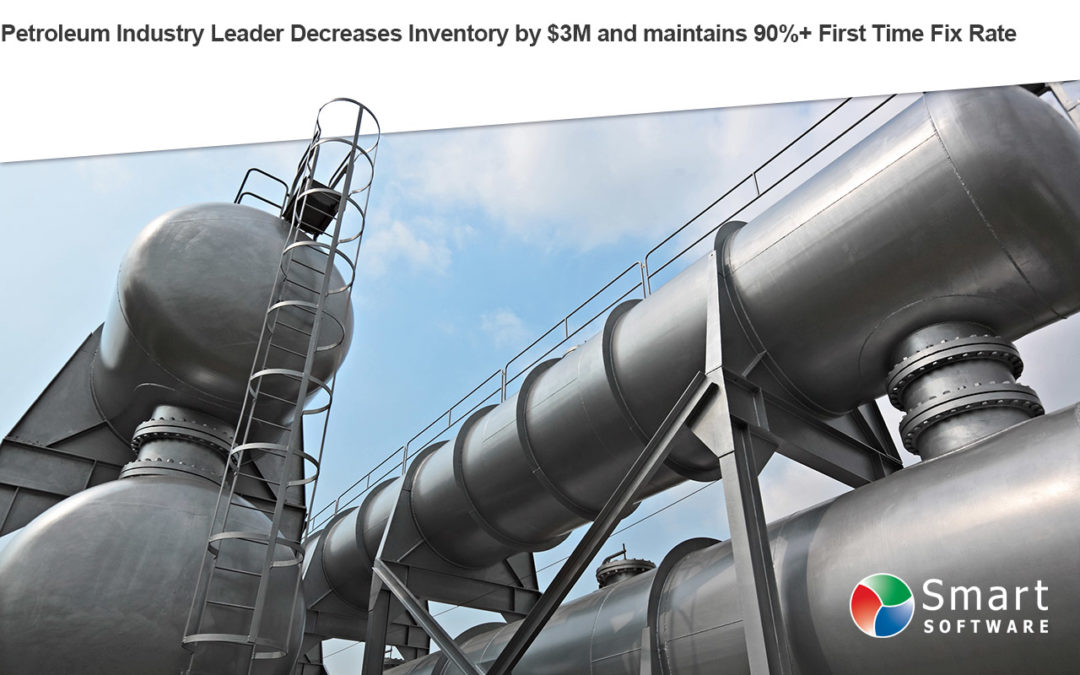Introduction
Seneca Companies, an industry leader in automotive petroleum services, offers a broad range of service station design, construction, service, comprehensive containment and dispensing solutions. Seneca Fuel Systems serves the US Midwest, Southern and Mountain regions with a highly skilled staff of 75 field technicians charged with keeping client fuel stations up and running.
Seneca Fuel operates a central warehouse in Des Moines and 5 additional stocking locations to ensure rapid availability of critical parts. We spoke recently with Dan Miller, Purchasing Manager for Seneca Fuel, who explained Seneca’s inventory planning challenges and how Smart Software has helped.
The Challenge
Keeping fuel systems up and running is crucial to Seneca clients. Down-time means lost revenue and potentially lost customers. Seneca dispatches locally based service technicians equipped with essential parts with the goal of a 90% first visit fix rate. If they don’t have what they need on hand, they must be able to secure what’s necessary from a nearby warehouse in a matter of hours.
The stocking challenge is immediately apparent: which parts to carry in the van, in what quantity, and what to carry in the warehouses to supply them, ensuring maximum service performance while minimizing inventory investment.
When Seneca and Smart began working together, Seneca treated all techs the same with respect to inventory policy. A standard list of parts was supplied to each van, with an approximate of $35K per van. However, clients were not all the same and vary across geographic service areas. Service stations in Southern Illinois, for example, tended to be smaller and require different parts than counterparts in Denver. This increased the likelihood that some parts would stock out in some vans, while others might sit untouched for years. There was a section in the central warehouse dubbed “zero turns,” for items that just didn’t move, which grew to a value of $400K.
“Something needed to change,” said Miller. “We needed the ability to stock to the specific needs of the local tech, resupply them in a timely way from our warehouses, and equip the warehouses to play backstop for any other unusual requirements that van stock wouldn’t cover.” Compounding this challenge was the highly sporadic, intermittent nature of service part demand. “Traditional forecasting didn’t help,” explained Miller. “We see periods of zero demand with seemingly random, unpredictable spikes. We needed a methodology that would enable us to plan for this.”
The Solution
Seneca Companies turned to Smart Software and its cloud-based solution, Smart Inventory Planning and Optimization. Smart IP&O is an integrated suite of native web applications for collaborative demand planning, inventory optimization and supply chain analytics. Running on the Amazon AWS cloud, Smart IP&O serves automatically receives daily transactional data from their JD Edwards ERP system, models customer demand and inventory performance, and returns optimal inventory policies to JDE to drive replenishment.
“Smart IP&O integrated easily with Seneca’s enterprise systems, and enabled us to model stocking requirements for each technical rep and service area,” said Miller. “Implementation was quick and user training effective, producing initial results within 6-8 week of project start.”
A key capability has been Smart’s unique approach to planning for intermittent demand, the highly variable, seemingly random and unforecastable consumption most common with service parts. This has enabled inventory planning to move from educated guesswork to service level-driven modeling.
Results
“Smart IP&O enabled us to model demand at each stocking location and, using service level-driven planning, determine how much to stock to achieve the service level we require. By running and comparing different scenarios we can easily define and update optimal stocking policies for each tech support rep and stockrooms.”
The software has provided field technicians with evidence they did not have before, showing them their actual consumption, frequency of part use, and rationale for stocking policies, using 90% as the targeted service level norm. Field technicians have embraced its use, with significant results: “Zero Turns” inventory has dropped from $400K to under $100K, “First Fix Rate” exceeds 90%, and total inventory investment has decreased by more than 25%, from $11 million to $ 8 million.
Learn more about Seneca Companies at https://www.senecaco.com/.
Learn more about Smart Software at www.smartcorp.com.








